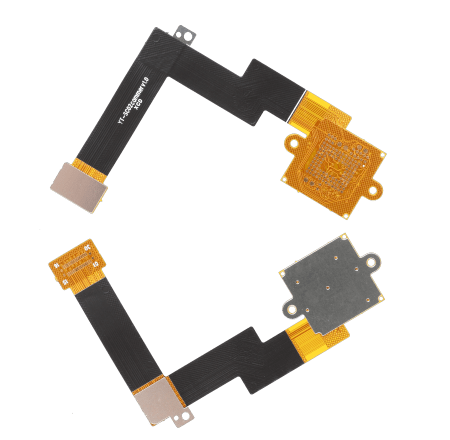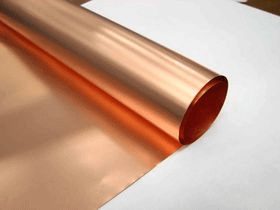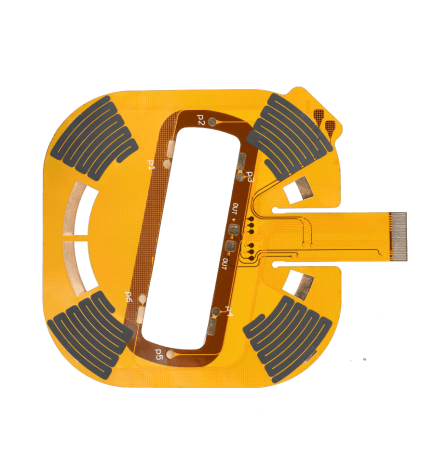- +86-755-23012705
- Building 3, Jinfeng Industrial Park, Fuyong Street, Baoan District, Shenzhen ,China
- [email protected]
Generally, a PCB made of a flexible insulating substrate is called a polyimide PCB or a flexible PCB, and a rigid-flex composite PCB is called a rigid-flex PCB. It adapts to the needs of today’s electronic products in the direction of high density and high reliability, miniaturization and lightweight, and meets the strict economic requirements and the needs of market and technology competition. Now the substrate for making flexible boards is polyimide, so flexible boards are also called polyimide PCBs
Polyimide PCBs are usually classified according to the number of layers and structure of the conductor as follows:
Single-sided flexible PCB with only one layer of conductor, the surface can be covered with or without a covering. The insulating substrate material used varies depending on the application of the product. Generally, commonly used insulating materials are polyester, polyimide, polytetrafluoroethylene, and flexible epoxy-glass cloth
Single-sided polyimide flex circuits can be further divided into the following four categories:
The wire pattern of this type of polyimide PCB is on the insulating substrate and there is no covering on the wire surface. Like the usual single-sided rigid PCB.
These products are one of the least expensive and are often used in non-critical and environmentally friendly applications. The interconnection is achieved by soldering, fusion soldering, or pressure soldering. It was commonly used in early telephones.

Compared with the previous class, this type only has an additional layer of covering on the surface of the wire according to customer requirements. When covering, the pad needs to be exposed, and it is simple to leave the end area uncovered.
If precision is required, the form of residual pore can be used. It is the most widely used and widely used single-sided flexible PCB, and is widely used in automotive instruments and electronic instruments.
This type of connection plate interface can be connected to both the front and back of the wire. For this purpose, a passage hole is made in the insulating substrate at the pad, which can be punched, etched or made by other mechanical methods at the desired position of the insulating substrate.
It is used to mount components, devices and soldering on both sides, and there is no insulating substrate in the pad area at the path, which is usually chemically removed.
This type differs from the previous class in that there is a covering layer on the surface. However, the cladding has access holes, which also allow it to be terminated on both sides and still maintain the cladding.
This type of polyimide PCB is made of two layers of insulation and one layer of metal conductor. It is used in situations where the covering layer needs to be insulated from the surrounding devices, and it needs to be insulated from each other, and the ends need to be connected with both the front and back.

Double-sided polyimide PCB with two layers of conductors.The applications and advantages of this type of double-sided flexible PCB are the same as those of single-sided flexible PCBs, and their main advantage is the increased routing density per unit area.It can be divided into
a non-metallized hole and no overlay,
b no metallized hole, no overlay,
c metallized hole, no overlay,
d metallized hole, no overlay.
Double-sided flexible PCBs without overlays are less widely used.
Flexible multilayer PCB, like rigid multilayer PCB, can be made into multilayer flexible PCB using multi-layer lamination technology. The simplest multilayer polyimide PCB is a three-layer flexible PCB formed by a single-sided PCB covered with two copper shields on both sides.
This three-layer polyimide PCB is electrically equivalent to coaxial or shielded wire. The most commonly used multilayer flexible PCB structure is a four-layer structure, which uses metallized holes to achieve interlayer interconnection, and the middle two layers are generally the power plane and the ground plane.

The advantages of multilayer flexible PCBs are the light weight of the substrate film and excellent electrical properties, such as a low dielectric constant. The multi-layer flexible PCB board made of polyimide film as the substrate is about 1/3 lighter than the weight of the rigid epoxy glass cloth multi-layer PCB board, but it loses the excellent flexibility of single-sided and double-sided flexible PCB, and most of these products do not require flexibility.
Take Your Projects to New Heights with XPCB Limited
XPCB Limited offers top-notch PCB manufacturing, quick-turnaround prototyping, and turnkey PCBA services designed to make your projects shine. Count on us to bring your ideas to life with efficiency and quality. Your success matters to us, and we’re here to make your innovation journey smooth and rewarding.






XPCB Limited is a premium PCB & PCBA manufacturer based in China.
We specialize in multilayer flexible circuits, rigid-flex PCB, HDI PCB, and Rogers PCB.
Quick-turn PCB prototyping is our specialty. Demanding project is our advantage.
Tel : +86-136-3163-3671
Fax : +86-755-2301 2705
Email : [email protected]
© 2024 - XPCB Limited All Right Reserve
